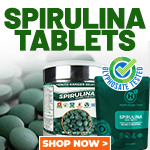U.S. medical infrastructure collapsing as drug shortages in emergency rooms skyrocket by 400%
Thursday, January 28, 2016 by: Harold Shaw
Tags: drug shortages, FDA controls, emergency rooms

(NaturalNews) Emergency rooms play a crucial role in the proper functioning of health care in the United States. During any given year, 45% of American people visit the ER, but a recent study published by the Academic Emergency Medicine journal suggests that not all of them can receive help. According to the study, between 2001 and 2014, drug shortages in ERs throughout the U.S. increased by a staggering 400%.
For some patients, this translated into prolonged duration of their diseases, permanent injury and even death. As the FDA struggles to resolve the issue, but unsurprisingly only makes matters worse, the actual cause of the spike in drug shortages remains neglected.
What the study says about drug shortages
As reported by the Chicago Tribune, the study in question put together data from the University of Utah Drug Information Service. The latter has been keeping track of drug shortages through a public website that receives reports on behalf of the American Society of Health-System Pharmacists. According to these reports, 1,800 drug shortages were submitted between 2001 and 2014, 34% of which took place in emergency rooms. It seems that, although the number of shortages was lower up to 2007, the following years witnessed a 435% increase.The study also wanted to determine whether these drug shortages were associated with lifesaving situations. As it turns out, a shocking 52.6% of shortages were of lifesaving drugs, while 10% referred to drugs with no substitute. Even when doctors were able to access replacement drugs, their lesser familiarity with the new drugs often led to mistakes and therefore to more casualties.
How could this happen?
In February 2014, a report was published by the United States Government Accountability Office (GAO) in order to determine what had gone wrong with the drug market. By interviewing FDA officials, as well as drug manufacturers and purchasers, GAO came up with four primary reasons for the spike in drug shortages. While discontinued production and regulatory processes were responsible for 6% and 3% of shortages, respectively, manufacturing problems accounted for 22% of shortages. Finally, a discrepancy between supply and demand resulted in a 12% shortage.As the report clearly shows, one of the most frequently cited immediate causes of drug shortages was that a manufacturer was forced to slow, postpone or altogether halt the production of a certain drug after a quality problem was identified by the FDA. While some manufacturers claim that the FDA investigators interpret the CGMPs differently and apply stricter sanctions, others believe that quality standards have also been raised during recent years. In any case, it seems that the more involved the FDA was, the more shortages were created.
Still, anyone doing the math will inevitably come to the conclusion that the reasons provided by the GOA report cover less than half of the total drug shortages. That's because in over 57% of the investigated shortages, the reason remains "unknown."
The U.S. medical infrastructure on the verge of collapse
The truth is that the U.S. medical infrastructure is in a state of collapse. The underlying cause is, as usual, a financial one. The same GOA report showed that drug purchasers often tend to discredit the quality of a drug and choose to consider only the lowest price instead, primarily due to financial constraints. As a result, any manufacturer that strives to place their product above the minimum standards is met with an impossible market where they cannot sell for a reasonable price.Ultimately, this caused manufacturers to stop investing in their establishments. What happened next? The FDA identified quality problems with their production and they were forced to either halt the manufacturing of drugs for renovation, or quit the market altogether. Back in the ER room, this accounted for yet another drug shortage and possibly an injured patient.
A vicious circle with no end in sight.
Sources include:
ChicagoTribune.com
ASHP.org[PDF]
GAO.gov[PDF]
Drug shortages at FETCH.news
Get independent news alerts on natural cures, food lab tests, cannabis medicine, science, robotics, drones, privacy and more.
Take Action: Support Natural News by linking to this article from your website
Permalink to this article:
Embed article link: (copy HTML code below):
Reprinting this article:
Non-commercial use OK, cite NaturalNews.com with clickable link.
Follow Natural News on Facebook, Twitter, Google Plus, and Pinterest
- Fauci is back in the limelight, and he’s busy promoting a future COVID or FLU pandemic
- Tulsi Gabbard leads charge against the Biden regime’s global censorship of the 'Disinformation Dozen'
- Aerosolized bioweapons? Strange “diploid biomasses” falling out of the sky in Florida captured under the microscope
- How Israeli military-connected corporations are secretly controlling your online privacy
- DEADLY FLU JAB WARNING: New flu vaccines make recipients 27 PERCENT MORE LIKELY to catch the flu
- New study links mRNA vaccines to GENETIC CHANGES - and not the good kind
- Idaho Gov. Brad Little signs Medical Freedom Act banning vaccine mandates
- Kiss Your Genetic Privacy Good-Bye! 23andMe Gets Green Light to Sell Your Intimate Genetic Details to Anyone They Want
- Analysis: The coming economic collapse, a mass uprising and Trump's three secret weapons to halt the growing revolt
- U.S. lawmakers investigate Meta over alleged China collaboration
- Tulsi Gabbard takes aim at censorship: Justice for the ‘Disinformation Dozen’
- Widespread social and economic unrest: Steve Quayle issues urgent financial warning of imminent asset collapse in new interview with Mike Adams
- DEATH BY DOCTOR: Why and how doctors are now PAID TO KILL their patients
- Mike Adams releases country western hit single: Goin’ Back in Time is Comin’ Home
- Curcumin’s ancient healing power supercharges muscle recovery, and its effects are compounded with anti-inflammatory foods and supplements
- A comprehensive guide to DANDELIONS, an ancient herbal medicine and superfood
- Trump’s EPA reviews fluoride safety amid growing concerns over risks to children’s health
- China’s counter-tariff strategies: A new chapter in the U.S.-China trade war
- Aerosolized bioweapons? Strange “diploid biomasses” falling out of the sky in Florida captured under the microscope
- Analysis: The coming economic collapse, a mass uprising and Trump's three secret weapons to halt the growing revolt
- Kiss Your Genetic Privacy Good-Bye! 23andMe Gets Green Light to Sell Your Intimate Genetic Details to Anyone They Want
- Widespread social and economic unrest: Steve Quayle issues urgent financial warning of imminent asset collapse in new interview with Mike Adams
- Defunding DEADLY mRNA jabs: Government funding for mRNA technology being scrutinized and sidelined until proven "safe and effective" for real
- CLOT SHOT PLANDEMIC UNFOLDING: Fibrous, rubbery clots caused by covid injections have prion-like seeding activity
- European Court of Justice: Healthcare professionals who promoted or administered COVID-19 vaccines are CRIMINALLY LIABLE for any harm caused
- Mike Adams releases country western hit single: Goin’ Back in Time is Comin’ Home
- DEATH by VACCINE or face PRISON time: Canadian Freedom Convoy leaders CONVICTED for protesting forced vaccination during the Covid Plandemic
- Newly released JFK files reveal Pentagon's role in creating Lyme disease and covid in the same lab
- “Project Aldrin”: Senate probes Meta's alleged censorship dealings with China
- How Israeli military-connected corporations are secretly controlling your online privacy
- The hidden war above: Chemtrails, HAARP and the battle for planetary control
- Federal employees whine over DOGE's new directive requiring them to do a 5-point summary of weekly accomplishments
- FBI imposed gag order on agents to silence Hunter Biden laptop truth before 2020 election, new chat logs reveal
- Tulsi Gabbard leads charge against the Biden regime’s global censorship of the 'Disinformation Dozen'
- U.S. approves new Russian ambassador as diplomatic thaw continues
- I Want My Bailout Money – new song released by Mike Adams
- Newly released JFK files reveal Pentagon's role in creating Lyme disease and covid in the same lab
- Mike Adams releases country western hit single: Goin’ Back in Time is Comin’ Home
- Dr. Mike Yeadon releases 15-minute testimony - WATCH - about genocidal intent of COVID “vaccines”
- The Health Ranger releases “Vaccine Zombie” song and music video, using AI-animated zombies for the music video
- California's social media censorship law struck down: A victory for free speech or a threat to online safety?
- EPA advisor admits the agency is funneling billions to climate groups ahead of Trump’s return to White House
- Rep. Nancy Mace introduces bill to ban biological males from female facilities on federal property
- OpenAI whistleblower who dissented against how the company trained ChatGPT found dead
- Survival 101: Effective EMF blocking techniques
- Analysis: The coming economic collapse, a mass uprising and Trump's three secret weapons to halt the growing revolt
- MEDICAL BOMBSHELL: FDA admits Covid mRNA 'Vaccines' CAUSE CANCER
- CONSERVATIVES SOUND THE ALARM: Big Pharma and the Left trying to force $32 billion money grab from America’s seniors into year-end spending deal
- Florida takes a stand: DeSantis proposes permanent ban on mRNA vaccine mandates
- Sugarcane extract superior to cholesterol-lowering drugs?
- Pilots report mysterious lights 'moving at extreme speeds' across Oregon skies
- Trump reverses course on Gaza plan, says “nobody is expelling Palestinians”
- 5 Simple steps to boost your brainpower: How to strengthen executive function in a distracted world
- Trump Administration cuts 2,000 USAID jobs, places most employees on leave in sweeping reform effort
- Red Cross issues warning to stop blood plasma donations from vaccinated people
- Scientists confirm: GENIUS brain function can be spontaneously unleashed in humans without any apparent cause
- EPA advisor admits the agency is funneling billions to climate groups ahead of Trump’s return to White House
- HYSSOP: What research reveals about the health benefits of this ancient holy herb
- Two containers with completed ballots fall out of truck in Florida
- Fully vaccinated about to see “tsunami” of illness and death, warns virologist
- Global leaders unite to clamp down on “misinformation” with UN-backed Cascais Declaration
- Newly released JFK files reveal Pentagon's role in creating Lyme disease and covid in the same lab
- BREAKING: 2025 NDAA authorizes mandatory military draft of WOMEN across America… as Pentagon pursues global NUCLEAR war with both Russia and China at the same time
- Michael Yon warns of a ZIONIST TAKEOVER in Trump’s second administration
- Ozempic and Wegovy weight loss drugs are injectable LIZARD VENOM PEPTIDES that may unleash a devastating wave of organ failure… side effects align with symptoms of SNAKE BITES
- The Health Ranger releases “Vaccine Zombie” song and music video, using AI-animated zombies for the music video
- BOMBSHELL: DNA testing kits are a SCAM to develop ethnic-specific bioweapons
- Israeli soldiers accused of even more torture and abuse in the West Bank
- These 13 countries just signed an agreement to engineer a global FAMINE by destroying food supply
- NASA admits that climate change occurs because of changes in Earth’s solar orbit, and NOT because of SUVs and fossil fuels
- RFK Jr. clears key hurdle: Sen. Susan Collins backs controversial HHS nominee, signaling a new era for health policy
- Sermon 30: How Jesus reveals Caesar’s FAKE CURRENCY and FALSE AUTHORITY
Science News & Studies
Medicine News and Information
Food News & Studies
Health News & Studies
Herbs News & Information
Pollution News & Studies
Cancer News & Studies
Climate News & Studies
Survival News & Information
Gear News & Information
News covering technology, stocks, hackers, and more



"Big Tech and mainstream media are constantly trying to silence the independent voices that dare to bring you the truth about toxic food ingredients, dangerous medications and the failed, fraudulent science of the profit-driven medical establishment.
Email is one of the best ways to make sure you stay informed, without the censorship of the tech giants (Google, Apple, Facebook, Twitter, YouTube, etc.). Stay informed and you'll even likely learn information that may help save your own life."
–The Health Ranger, Mike Adams












































